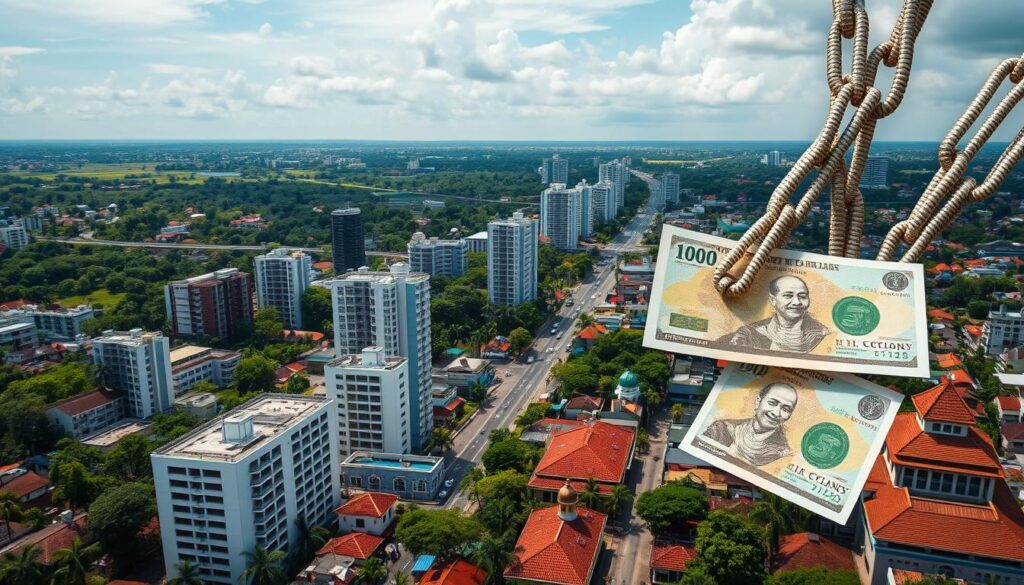Sri Lanka’s Netball Team Returns Home After Victory
Sri Lanka’s Netball Team Returns Home After Asian Championship Success with great pride. They came back as the strong runners-up of a thrilling tournament. Their skill and hard work at the Asian Netball Championship 2024 stood out.
The coach praised the team for their grit despite challenges. Their success shines as a beacon of hope for netball in Sri Lanka. Their journey back is not just about traveling. It marks a big achievement for the sport in the country. The nation’s joyous welcome highlights their proud moment in sports history. Read more about their journey on Sri Lanka’s sporting narrative.
Key Takeaways
- Sri Lanka excels in netball, winning several championships and showing great talent.
- The nation supports its athletes, showing how sports unite and celebrate Sri Lankan culture.
- Even with economic and administrative challenges, Sri Lankan athletes keep competing with determination and pride.
- The team’s victory and warm welcome home show potential for growth in netball and other sports.
- Schools like Holy Family Convent, Kurunegala are key in developing young talent like netball star Hiruni.
- With a focus on youth and global competitions, Sri Lanka aims to climb the ranks in world netball.
A Glimpse into Sri Lanka’s Journey at the Asian Netball Championship
Sri Lanka’s national team shined at the annual Asian Championships. Their remarkable performance has thrilled fans and boosted national pride. This competition draws the continent’s top teams. It’s a stage for fierce battles and the rise of new netball stars.
Undefeated Streak in the Group Stages
Sri Lanka kicked off with a strong win against the Philippines, scoring 73-42. This win began their string of victories. They went on to defeat Saudi Arabia, India, Japan, Malaysia, and the Maldives. Sri Lanka dominated each game, showing their strength and skill.
Decisive Wins Showcasing Dominance
Moving smoothly into the semi-finals, the team impressed everyone against Hong Kong. The score was 71-47. Every player played a vital role in this win. Their success in the semi-finals underscored their skill and earned them a top spot at the championships.
A Nail-Biting Final Against Singapore
The final match against Singapore was gripping. Both teams fought hard, displaying strategic plays and persistence. In the end, Singapore won by a small margin. Yet, Sri Lanka’s performance was strong throughout the tournament. Their strategy and gameplay were commendable in this important event.
Reflecting on these matches shows the need to promote human rights in sports. Fair treatment for all is crucial, as this analysis discusses. Sri Lanka’s journey offers valuable lessons for the nation’s sports future.
Sri Lanka’s Netball Team Returns Home After Asian Championship Success
The Sri Lankan national netball team came home to a huge welcome. They won the Asian Netball Championship, making everyone proud. Their win shows the country’s love for the sport and their amazing skills.
Nation’s Euphoria Over the Team’s Homecoming
Fans filled Colombo’s streets to celebrate the win. This big welcome shows the country’s pride. The team rode through the city on an open-top bus, shining like heroes.
Recognition of Athletic Excellence and National Pride
Their win boosts Sri Lanka’s sports reputation worldwide. Thanks to great planning and hard work, they’ve made their country proud. This win shows Sri Lanka’s commitment to excellence, helping both sports and the nation to grow. Sri Lanka’s investment in promoting excellence shines through.
The coach applauded the team’s amazing effort. Even though she’s leaving, her strategies and the team’s hard work set a high bar for future teams. They aim to keep this level of success going.
This victory has made netball even more special in Sri Lanka. It inspires young athletes, showing them what they can achieve. It’s a shining example for all, encouraging them to reach their dreams.
The Struggles Behind Sri Lanka’s Netball Triumphs
The Sri Lankan netball team’s success is shadowed by major issues. They fell in world rankings, from 14th in 2009 to 25th. This shows problems within the sport’s leadership. Despite winning the Asian Netball title four times, countries like Singapore, Malaysia, and Hong Kong are doing better. They’ve surpassed Sri Lanka in both rankings and facilities.
Head Coach P.D.N. Prasadi is committed beyond just tactics. She invests her own money and works hard to turn talent into winners. While cricket in Sri Lanka has seen massive improvements, netball is still struggling. By focusing on netball, it might become as big as cricket in the region.
It’s crucial to fix the problems with the nation’s netball federation, especially with the Asia Cup coming up. Sri Lanka needs a stable netball system to compete well again. The team’s past wins, despite difficulties, show their strong spirit. It’s a wake-up call for better support from the sports authorities.

 showcase local talent in Sinhala, Tamil, and English literature. The festivals provide a platform for established and emerging writers to share their works.
showcase local talent in Sinhala, Tamil, and English literature. The festivals provide a platform for established and emerging writers to share their works.